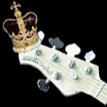For conversion you'll need to do two to four things...
Necessary:
1.) Replace or recut the nut
2.) Replace or recut the bridge
Recommended:
3.) Switch sound post
4.) Switch bass bar
The sound post is on the treble-side and allows transferrance of upper registers vibrations to the back of the bass so they'll be louder and resonate better. Moving this around can alter the sound of the bass.
The bass bar runs vertically up and down the inside of the bass and adds stability to the body and bears the weight of the extra tension coming from the heavier strings.
You can get away with not doing 3 and 4, but your bass will sound much better if these are done.
3 is a pain in the ass, but relatively easy with the right tools and know-how.
4 is a HUGE undertaking and very expensive.
Also... when buying a right-handed upright, be sure to ask the seller if the fingerboard is beveled... the technical name is the Romberg Bevel. Many older upright basses have an angle between the E and A strings to give more room underneath the E string for vibration.
If the bass has this, successful conversion is unlikely.
I recommend buying a new lefty Englehardt... they're fine basses for the money, ESPECIALLY if you're just getting into it. It's worth it to pay a little extra for the better model as differences in tone woods and construction can vary quite a bit for just a little more money.
Hope that helps... I looked into this for a very long time. I recently worked at a music store and did a ton of research. Never pulled the trigger on one, but I still hope to pick one up someday.
Sorry it took me so long to post...

Good luck!






